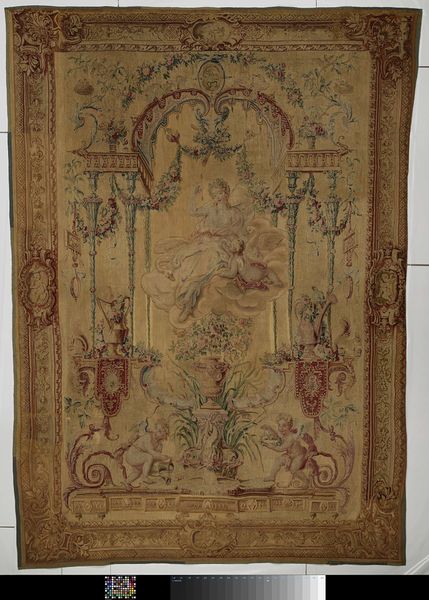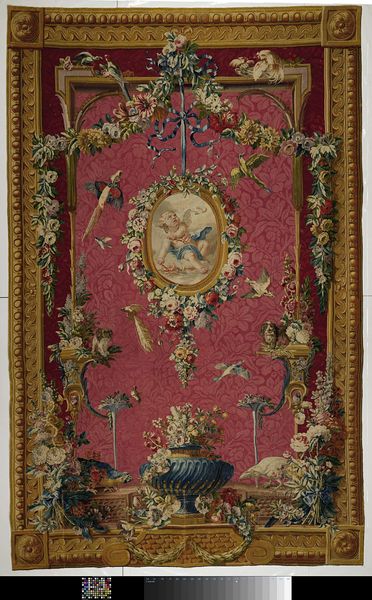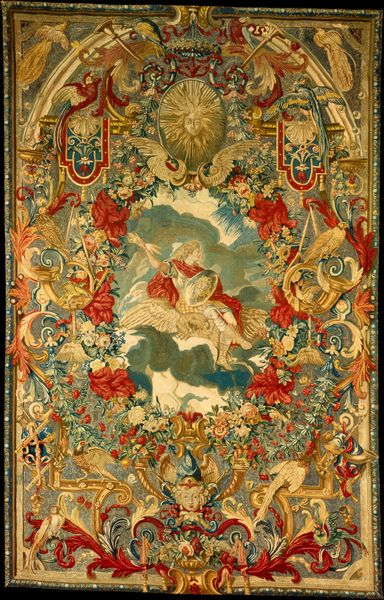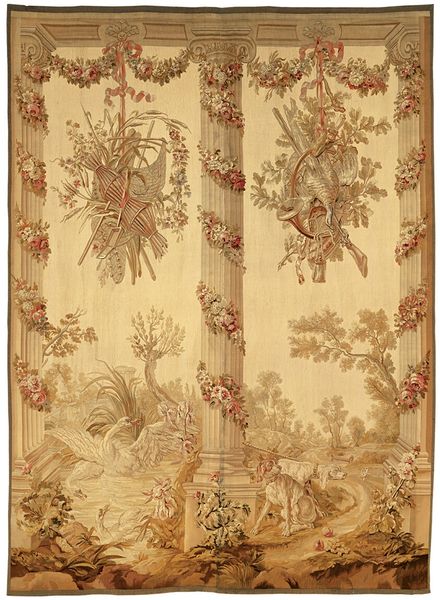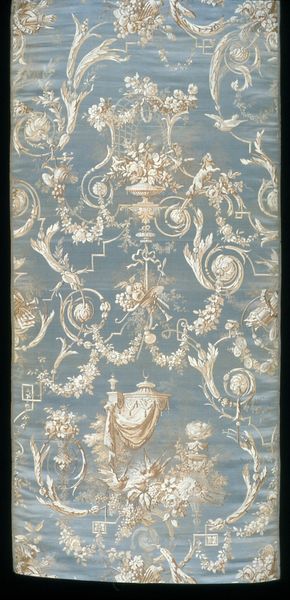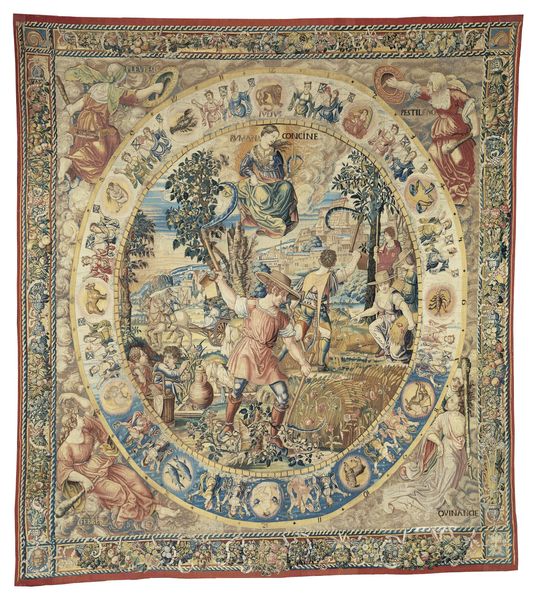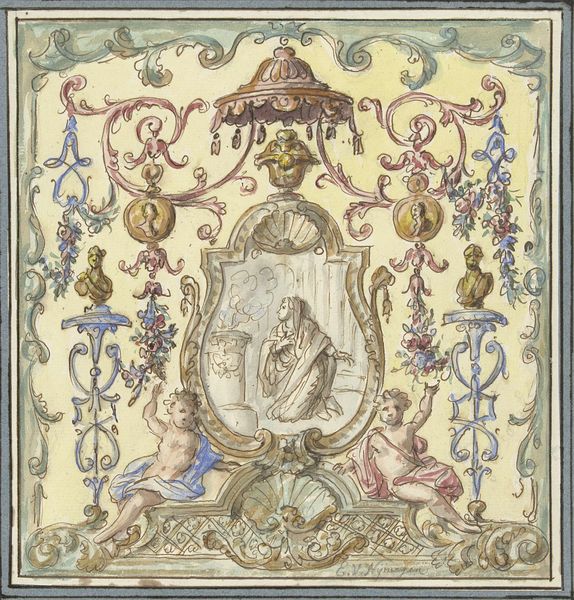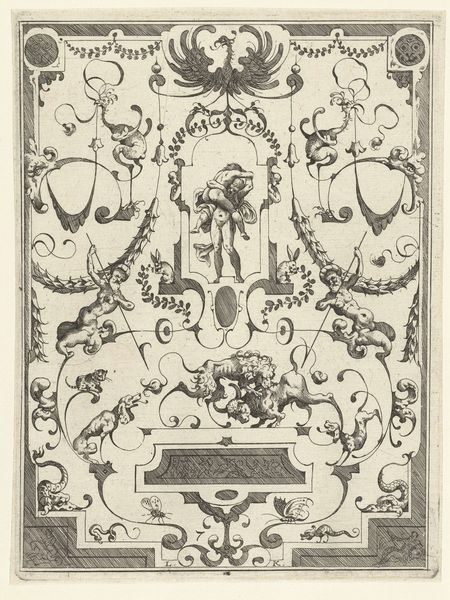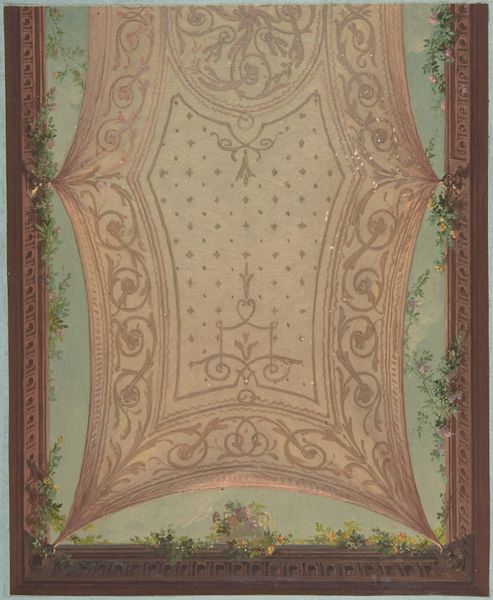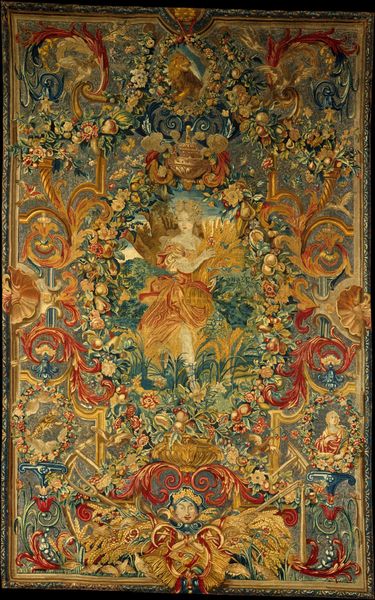
Wandtapijt met Bacchus als personificatie van de herfst c. 1722 - 1728
0:00
0:00
weaving, textile
#
allegory
#
baroque
#
weaving
#
landscape
#
textile
#
figuration
Dimensions: height 349.0 cm, width 242.0 cm
Copyright: Rijks Museum: Open Domain
This tapestry was made at the Manufacture Royale des Gobelins, woven from wool and silk. It depicts Bacchus, the god of wine, as the personification of autumn. The Gobelins manufactory was established in the 17th century under Louis XIV, becoming synonymous with luxury goods that served the Bourbon dynasty's cultural and political ambitions. Tapestries like this one were not merely decorative; they were potent symbols of royal power and wealth. The intense labor required to produce such a piece would have involved teams of highly skilled weavers, working for months or even years to translate a painted design into textile form. Consider the weight of the material, the intricacy of the weave, and the sheer amount of human effort embedded in every square inch. This piece beautifully illustrates how art, craft, and political power were intertwined. Appreciating the artistry and the modes of production at the time, challenges traditional distinctions between fine art and craft.
Comments
No comments
Be the first to comment and join the conversation on the ultimate creative platform.
